At first glance, it can be easy for beginner plant parents to mix up a pothos and a heart leaf philodendron. After all, they both have heart-shaped foliage that is green and glossy. Both plants have a growth habit that is like a vine, and look great both trailing and draping beautifully from a hearth or hanging pot, or climbing a trellis.
But they don’t have quite the same care needs (though they are fairly similar), and it is nice to know what it is you are growing! So let’s dig into how to tell the plants apart.
Pothos vs Philodendron: Taxonomy
Both pothos and philodendron belong to the Araceae family, but if you break it down further, you’ll find the difference. Pothos come from the Epipremnum genus and philodendrons belong to, you guessed it, the Philodendron genus.
Most pothos varieties, such as golden pothos, neon pothos, and jade pothos, come from the species epipremnum aureum.
The botanical name for the heart leaf philodendron, on the other hand, is philodendron hederaceum. In addition to the classic green heartleaf philodendron, you may also want to look for philodendron brasil, a variation that has a lime green stripe down the middle, and philodendron micans, a variation with velvety leaves.
Growfully Protip
You may still see heartleaf philodendron sold as philodendron cordatum, but this is outdated nomenclature.

Pothos vs Philodendron: Leaves
Shape and Texture
The leaves of both pothos and vining philodendron are relatively heart shaped, but a philodendron leaf tends to be wider. Also, if you look at where the leaf connects to the stem, or the petiole, a philodendron leaf will have a more dramatic curve like you’d see at the top of a heart.
In general, pothos also have thicker, more waxy leaves than heart leaf philodendron.
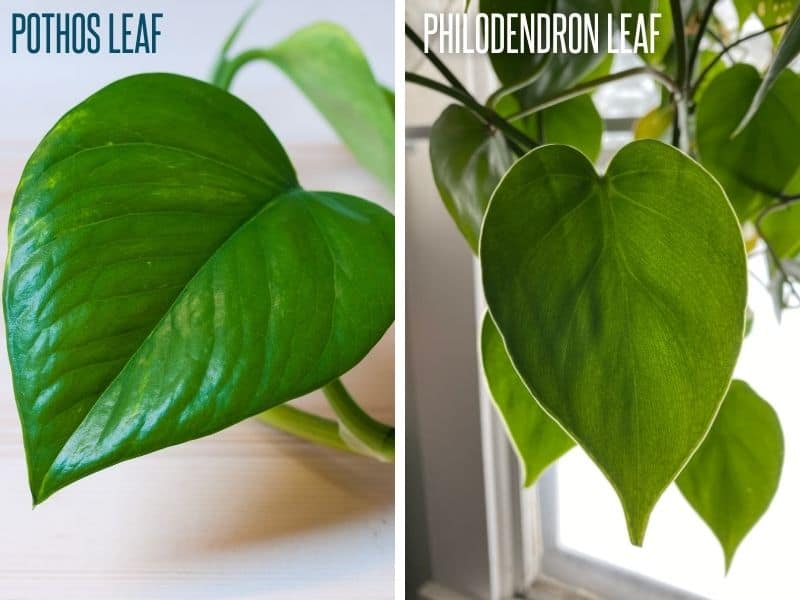
Petioles
The petioles are the sort of mini stems that connect the leaves to the main stem of the plant. A philodendron petiole is rounded, whereas a pothos petiole is indented and curved inwards, sort of like the shape of a celery stalk.

Aerial Roots
Both philodendron and pothos plants will grow aerial roots, which help them climb and vine. However, pothos aerial roots are thick, and there will only be one per node, which is where the leaf and petiole attaches to the stem. In contrast, heartleaf philodendron aerial roots are thinner, and you’ll see two or more at each node.
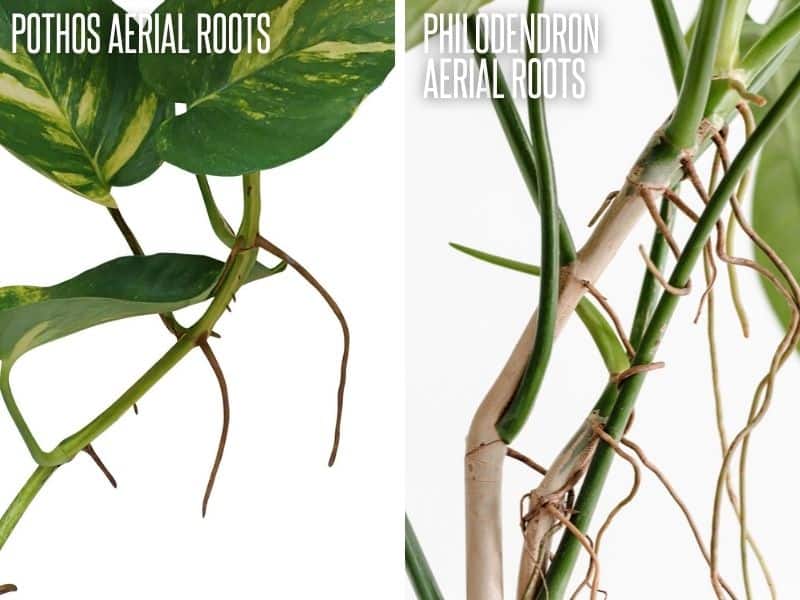
New Growth
The final way we’ll distinguish between pothos and heartleaf philodendron today are by how new leaves grow. A new pothos leaf is tightly curled, and slowly unfurls over time, revealing a lighter version of a mature leaf that will darken over time.
New philodendron leaves, on the other hand, will be encased in sheaths, called cataphylls. Once the leaves have opened and matured, the cataphylls will dry up and fall off. A baby philodendron leaf tends to have a pinkish or yellowish tint to it, and it will turn more green as it matures.
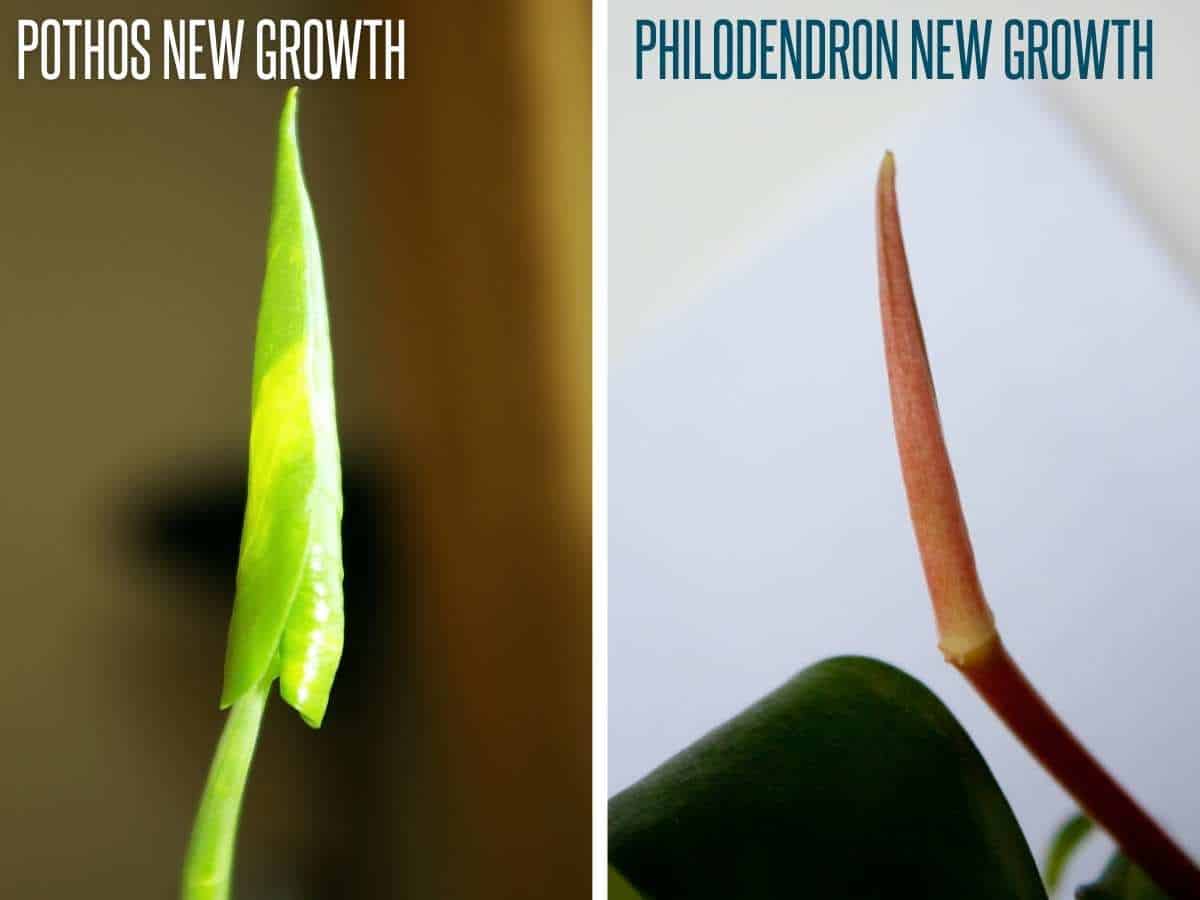
Can you mix pothos and philodendron together?
While I haven’t tried it myself, if you’re experimenting with big mixed planters of various houseplants in the same container, I don’t see why it wouldn’t work. Both plants are low maintenance plants and have similar care needs that would complement each other nicely:
- Both pothos and philodendron can handle low light conditions, though they would prefer bright, indirect light.
- If you have a variegated pothos or philodendron and notice the variegation fading, your plant doesn’t have enough light. Try moving it to a sunnier spot, and you should see more color coming back to the leaves.
- In general, you want to let the soil dry out a little bit between waterings—wait to water until the top inch of soil is dry. Pothos in particular are prone to root rot if they have too much moisture.
Happy growing!

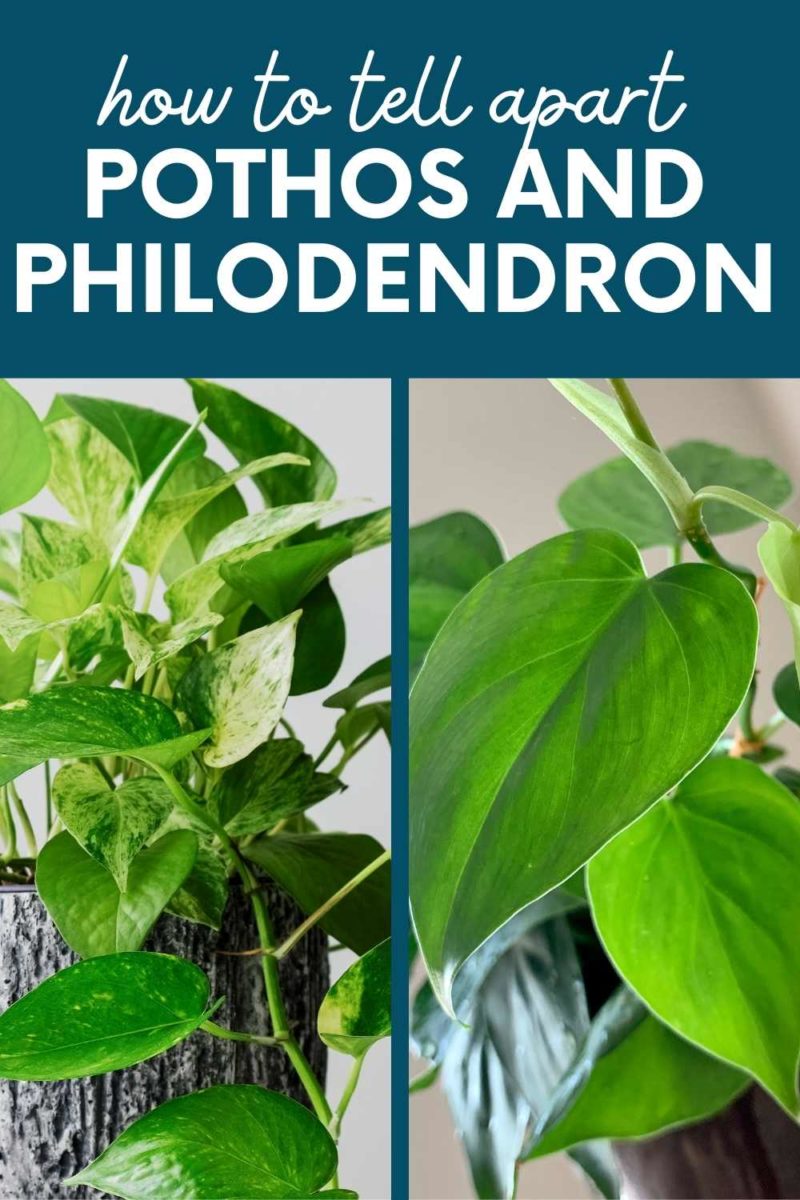

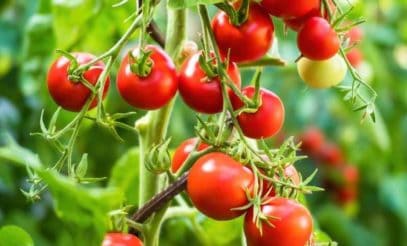

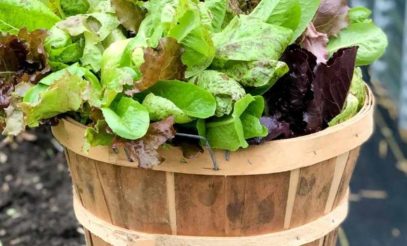
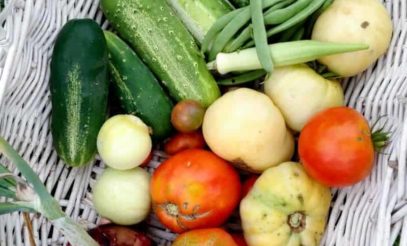
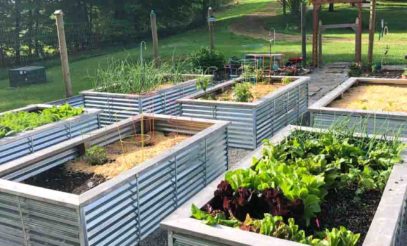
I Love Philodendron plant,, Nice Info. Thank You for your post..
That was amazing but I have a question still have a question. My pothos plants are healthy but a few leaves are turning yellow any help about this.
Are they the older leaves? It could just be the natural aging process.
My Pothos , on most mornings, has a drop of water at the tip of the leaf. It appears to be a very healthy plant. Am I overwatering??
Yup, that sounds like guttation, where excess water gathers on the edges of leaves. You can try backing off on the water, and water when the soil feels dry and the vines start to droop.